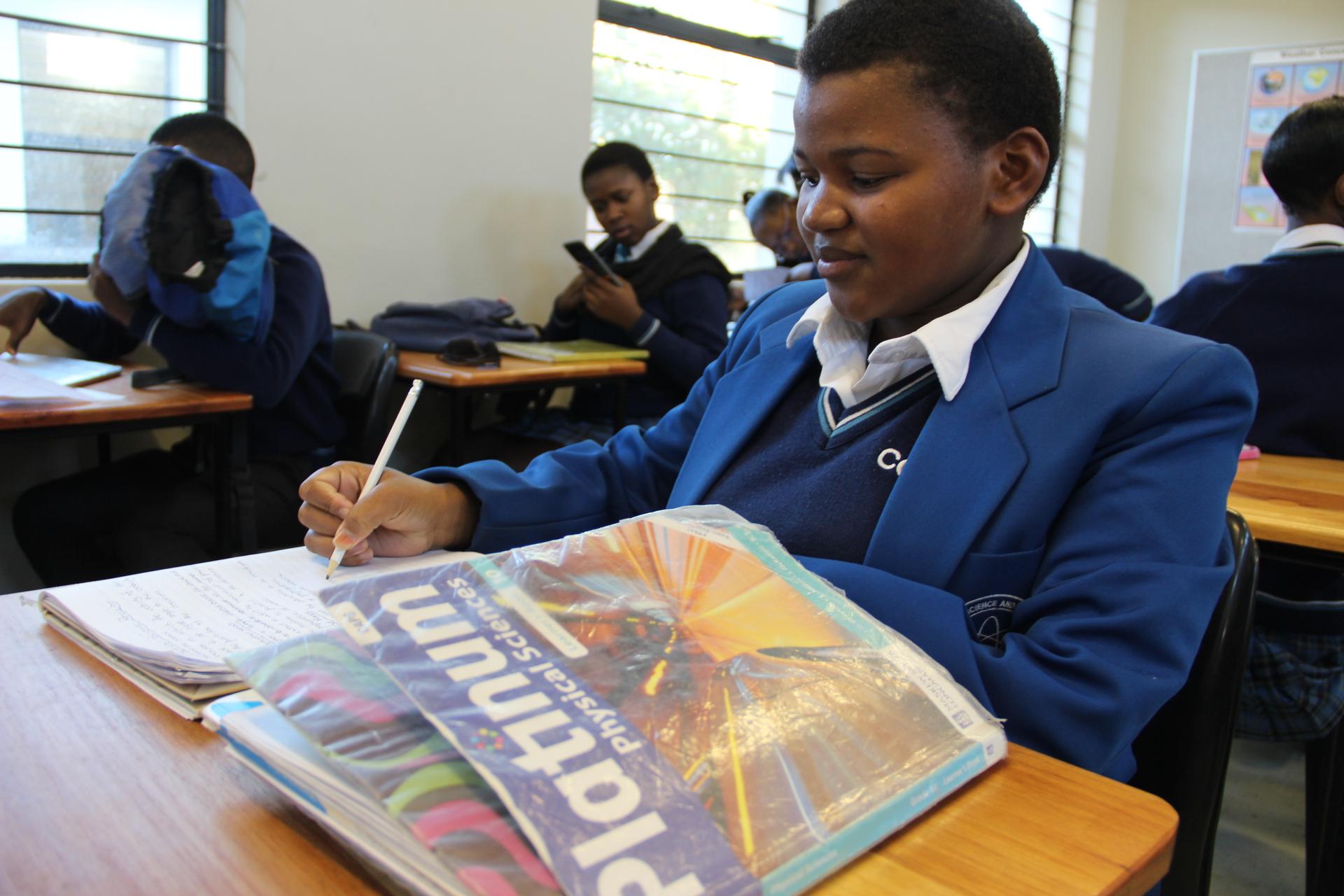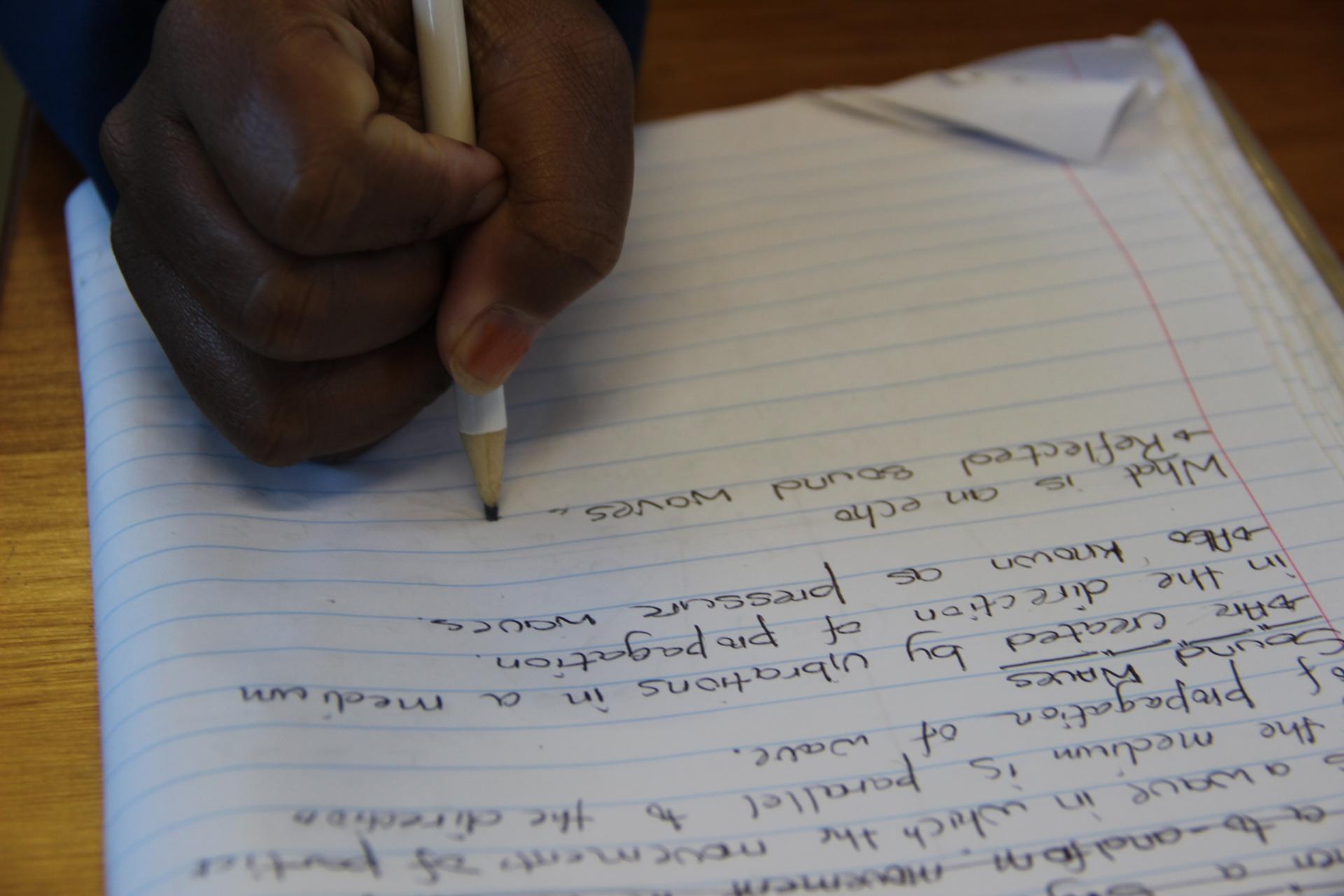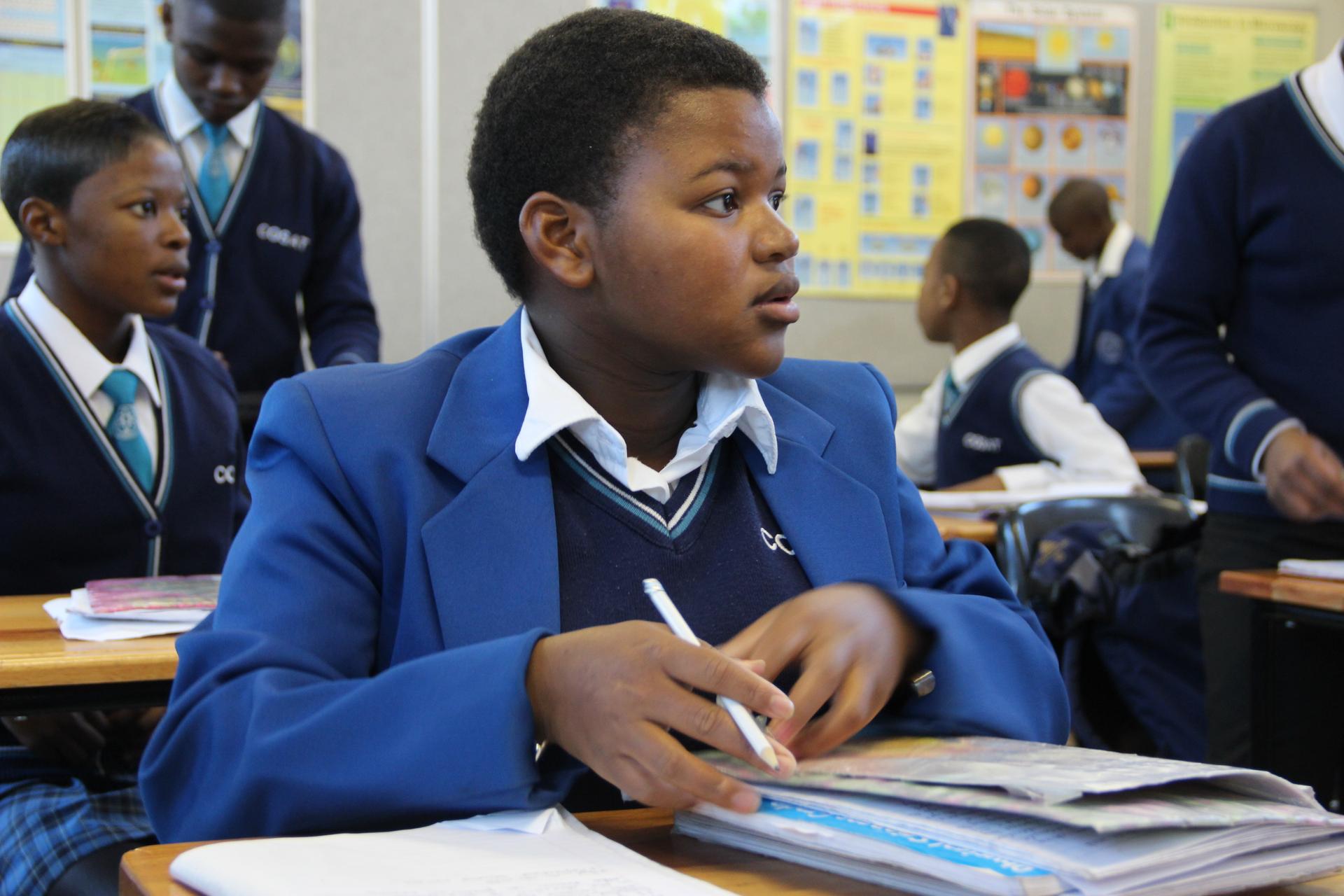Keeping up in Class: Students, School Face Growing Pains
Sikelela is a new tenth-grader at COSAT. (Photo: Anders Kelto)
This story is part of a year-long series, School Year: Learning, Poverty, and Success in a South African Township.
A few weeks ago, Thoko Matosi, a physics teacher at the Centre of Science and Technology (COSAT), was helping her 10th-grade students with an electronics lab.
The students huddled around wires and circuit boards. But, as Ms. Matosi pointed out, not all of the kids were involved.
“A lot of them are just standing,” she said.
The classroom had only three circuit boards for 30 kids. That meant just a few kids in each group would do the experiment, while the rest watched. Ms. Matosi said that was not conducive to learning.
“You don’t really learn much when you just observe things,” she said.
One student who was just observing was a sophomore named Sikelela. She had short hair and a big smile, and sat quietly at her desk, hands folded in her lap. She said she hadn’t really participated in the lab, and didn’t follow what her peers were doing.
“I’m not really understanding it,” Sikelela said. “I’m just writing their findings.”

More Students, Greater Struggles
Sikelela’s situation reflects a growing trend at COSAT.
The school was founded as an elite institution, attracting the very best students from one of the poorest parts of town. Nearly all of the students graduated, and most went on to college. The government saw this success and forced the school to expand. Its enrollment has more than doubled over the past four years. That has meant more crowded classrooms.
Sikelela has been part of that expansion. This is her first year at COSAT, and she is struggling to keep up with the school’s fast-paced curriculum. At her old high school, she didn’t have to work that hard.
“If you [didn’t] understand, they would repeat it until you [were] bored,” Sikelela said. But that is not the case at COSAT.
Since arriving here, Sikelela had fallen behind in most of her classes and failed several tests. She was starting to wonder if she belonged here.
Sikelela’s story raises an important question: By admitting students who are not well-prepared for such a high-pressure environment, is COSAT doing those students a disservice? Will they simply become discouraged?
“My opinion is that they can succeed,” said the school’s principal, Phadiela Cooper. “With the correct nurturing and support, we can perform miracles. We’ve seen it in the past.”
But in the present, the school is stretched thin. Classes are bigger, resources are scarcer, and teachers are working longer hours. That makes it harder to provide a nurturing, supportive environment that can help students who are struggling.
Mid-year Assessment
At the time I spoke to Mrs. Cooper, students were preparing to take mid-year exams that would indicate how they’re doing in this new environment. It was clear that Mrs. Cooper was a bit worried about what the tests would show.
“I’m optimistic,” she said, “but concerned.”
A short time later, Sikelela – the 10th-grader – was doing some last-minute studying in the school courtyard. She was about to take her mid-year physics test. She said she was feeling pretty well prepared.
“I studied so much, especially yesterday – during the weekend,” she said.
She felt comfortable with most of the physics material, except for one section. “The electricity topic – I didn’t really understand it,” she said. “But I did work my best.”
Last week, the grades were in – for all the classes.
The scoring system at COSAT is on a 100-point scale. A passing grade is 40 percent. But COSAT wants all of its students to get at least 50 percent in all of their subjects.

In her office, the principal, Mrs. Cooper, flipped through a stack of papers with test scores. She said the sophomore class, which has a lot of new students, didn’t do very well compared with previous years.
“We [have] so many more people scoring less than 50 percent,” she said. “And that is a worry.”
Mrs. Cooper said that with a limited budget, there wasn’t much she could do about the problem. She couldn’t hire more teachers, and she couldn’t ask current teachers to work more hours. COSAT was already offering Saturday school for students who need extra help. All the school could do, she said, was put the onus on the students – and convince them to work harder.
“It’s not up to us,” she said. “They have to do what is required.”
Finding Motivation
That message seems to have gotten through to 10th-grader Sikelela.
On the last day of classes before the mid-year break, she got her report card. In physics, she received a 67 – not as high as she had hoped, but better than many of her peers.
Most importantly, she said the process of studying hard and seeing the effort pay off taught her that she is capable of more than she thought.
“I’m motivated, I’m inspired, and I’m going to make time for my books,” she said.
Sikelela has seen the benefit of having teachers who hold her to high standards.
“Sometimes, you need some people to push you,” she said.
Before she came to COSAT, she said no one really held her accountable. But here, the teachers are demanding, and they push her to work hard.
And now, as the school goes on mid-year break, she said she is starting to feel at home here.
